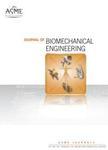版权所有:内蒙古大学图书馆 技术提供:维普资讯• 智图
内蒙古自治区呼和浩特市赛罕区大学西街235号 邮编: 010021

作者机构:Georgia Inst Technol Sch Mech Engn Atlanta GA 30332 USA Univ Michigan Orthopaed Res Labs Ann Arbor MI 48109 USA
出 版 物:《JOURNAL OF BIOMECHANICAL ENGINEERING-TRANSACTIONS OF THE ASME》 (J. Biomech. Eng.)
年 卷 期:1998年第120卷第2期
页 面:289-295页
核心收录:
学科分类:0831[工学-生物医学工程(可授工学、理学、医学学位)] 0710[理学-生物学] 1001[医学-基础医学(可授医学、理学学位)] 10[医学]
基 金:NIAMS NIH HHS [AR31793] Funding Source: Medline
主 题:骨和骨组织/解剖学和组织学 骨和骨组织/生理学 骨和骨组织/超微结构 计算机模拟 弹性 有限元分析 预测 模型 生物学 示波测量法 结果可重复性 应力 物理 人类
摘 要:Digital image-based finite element meshing is an alternative approach to time-consuming conventional meshing techniques for generating realistic three-dimensional (3D) models of complex structures. Although not limited to biological applications, digital image-based modeling has been used to generate structure-specific (i.e., nongeneric) models of whole bones and trabecular bone microstructures. However questions remain regarding the solution accuracy provided by the digital meshing approach, particularly at model or material boundaries. The purpose of this study was to compare the accuracy of digital and conventional smooth boundary models based on theoretical solutions for a two-dimensional (2D) compression plate and a 3D circular cantilever beam. For both the plate and beam analyses, the predicted solution at digital model boundaries was characterized by local oscillations, which produced potentially high errors within individual boundary elements. Significantly, however, the digital model boundary solution oscillated approximately about the theoretical solution. A marked improvement in solution accuracy was therefore achieved by considering average results within a region composed of several elements. Absolute errors for Von Mises stress averaged over the beam cross section, for example, converged to less than 4 percent, and the predicted free-end displacement of the cantilever beam was within 1 percent of the theoretical solution, Analyses at several beam orientations and mesh resolutions suggested a minimum discretization of three to four digital finite elements through the beam cross section to avoid high numerical stiffening errors under bending.